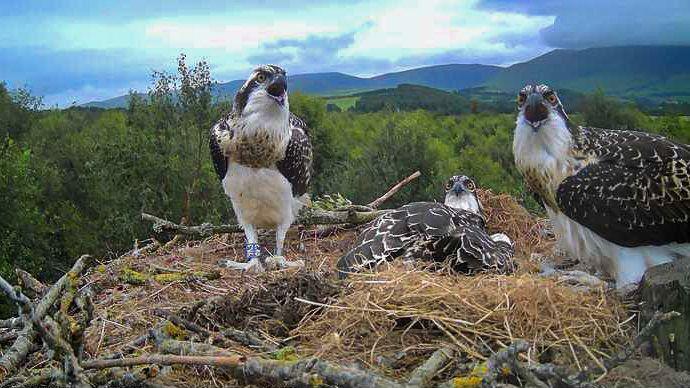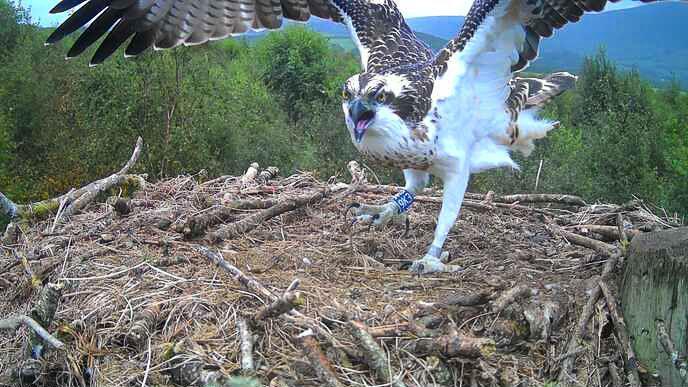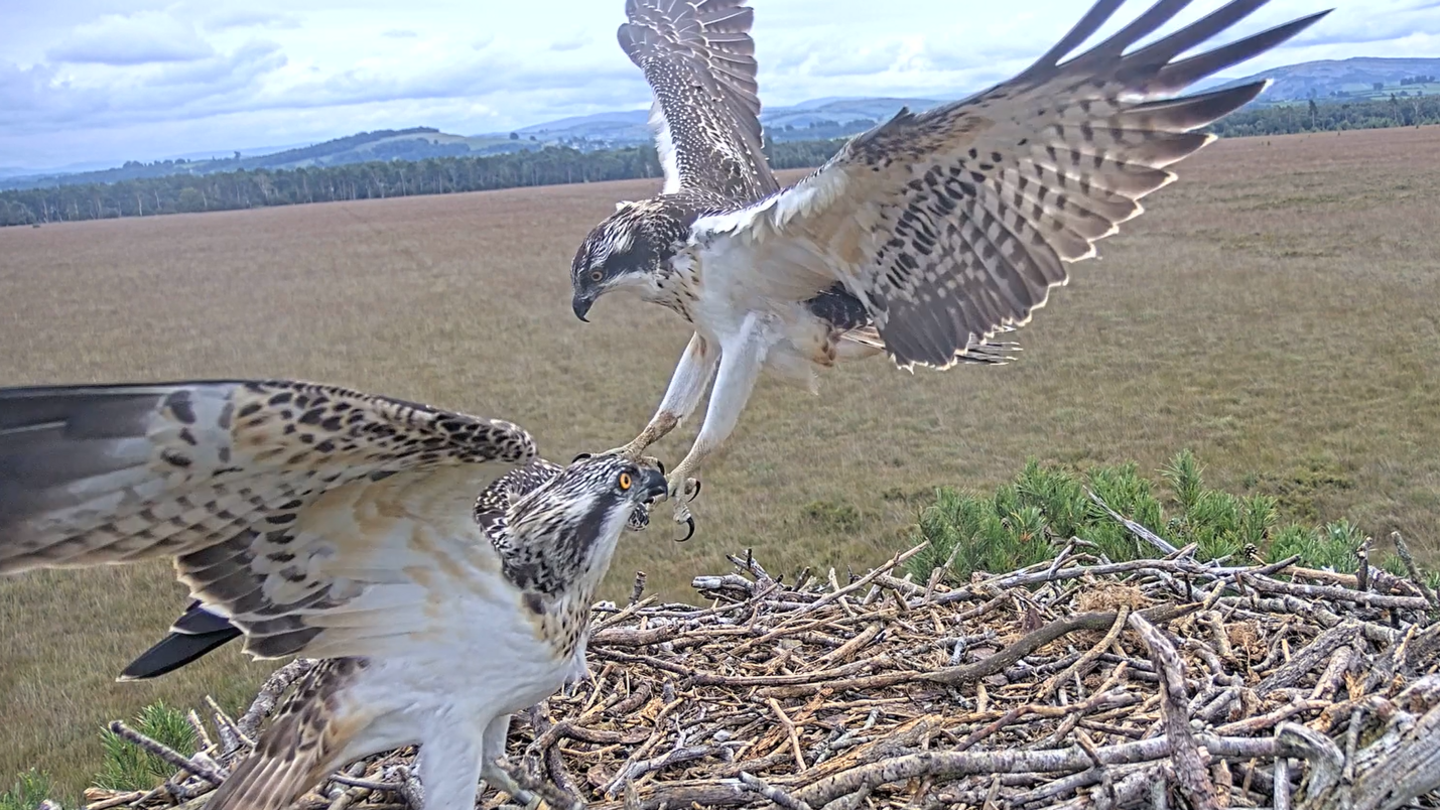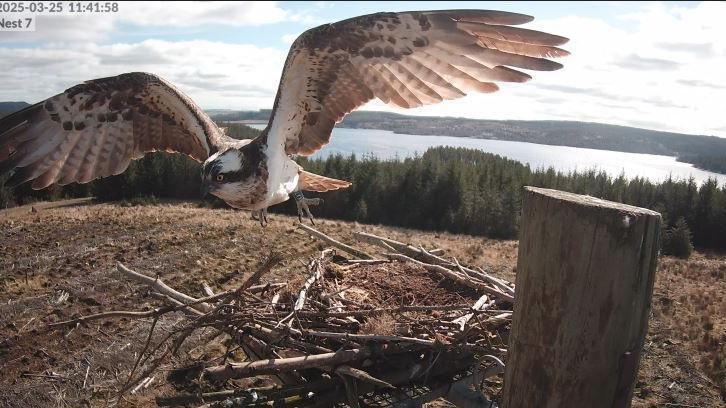Osprey chicks hatched on previously unused nest

Conservationists hope the use of the nesting pole means ospreys are expanding their range
- Published
Britain's rarest birds of prey have successfully reared three chicks at a previously unused nesting site.
The osprey chicks hatched on a nesting pole near Bassenthwaite Lake in Cumbria and are the first to be born there since monitoring began 12 years ago.
Ospreys were driven to extinction in England and Scotland in the 20th Century but numbers have slowly recovered due to conservation efforts.
Forestry England said osprey populations were still relatively low but it hoped the use of the pole meant the species was "expanding its range across the north of the country".
Ranger Nathan Fox said: "As species numbers increase the number of nest sites also grows and we've been monitoring this nesting pole for 10 years in the hope it would attract a pair.
"We believe these are first-time breeders so it's fantastic to see them successfully hatch, rear and fledge three healthy chicks who in due course will hopefully return to mate and breed themselves."

The final chick left the nest on 16 September to migrate 3,000 miles to West Africa
The birds of prey first returned to the Lake District to breed in 2001 and have also set up a nesting site in Kielder Forest, where more than 100 chicks have fledged.
The newest breeding pair were a male hatched at Kielder and a female from Scotland who have now begun their first migration to West Africa for the winter.
Each of the Bassenthwaite chicks have begun their own journey south, with the last one leaving the nest on 16 September.
Two of the three chicks have been fitted with British Trust for Ornithology identification rings to help track their progress.
It is hoped the birds will return to Bassenthwaite in two to three years to breed.
Follow BBC Cumbria on X, external, Facebook, external, Nextdoor and Instagram, external.
Get in touch
Do you have a story suggestion for BBC Cumbria?
Related topics
- Published11 September

- Published24 August
